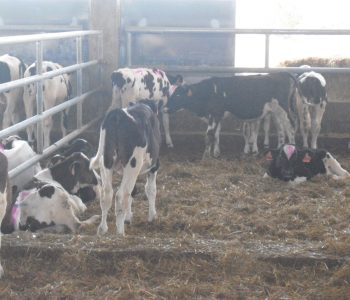Points to consider
- Lactating calves destined for beef are currently on the spotlight. Their future is currently under discussion as their animal welfare is being questioned.
- Feeding after birth has a major impact on the recovery of these animals.
- In dairies these lactating calves are considered a by-product and do not always receive the best care nor feeding. They are transported at a young age facing management and transport practices that involve stress and undernourishment while still having an immature immune system. Affecting their health and wellbeing.
- Nutritional strategies such as providing calves with concentrate before the last transport or increasing the availability of acidified milk between milk replacement feedings in collection centers attempt to reduce the impact of fasting. Allowing them to recover their feed intake more quickly upon arrival.
Management that can affect well-being
These lactating calves are considered a by-product in many dairies. Hence, they don’t always receive the best care and feeding.
In addition, they are transported at a young age without having their immune system well developed, and the management around transport involves stress and undernourishment which affects their health and overall well-being.
These lactating calves arrive with high stress levels and with a negative energy balance due to suboptimal feeding prior to transport plus the fasting hours they are subjected to during transport.
These restrictions and prolonged fasting affect the gastrointestinal tract of calves, causing an increase in intestinal permeability while reducing the number of enterocytes. This hinders the digestibility of feed and prolongs the recovery of intake levels in these animals. Hence, feed intake in these calves takes approximately 2 weeks after arrival to be completely restored.
Therefore, in order to reduce the incidence of disease (especially respiratory complications) as well as mortality, there is an excess use of antibiotics within this type of production system.
The importance of colostrum
Feeding after birth has a major impact on the recovery of these animals.
Colostrum has as its first function to provide immunity to calves, but also bioactive substances that help the development of the gastrointestinal tract.
Poorly placed calves have weight loss during the first 14 days of life, immunity levels are lower upon arrival at the farm and makes these animals more susceptible to diseases, dilating the recovery time of intake.
Transport
However, there is still a long way to go, such as defining criteria to consider these animals suitable before being transported in dairies.
In Summary
Upon arrival we still have to deepen and study how to improve nutritional strategies in the reception of lactating calves, know the impact of other factors such as the mixture of origins, and above all, work with the minimum use of antibiotics.
Source: Authors: Devant, Maria; Marti, Sònia. Researchers in Ruminant Production at IRTA Torre Marimon,
